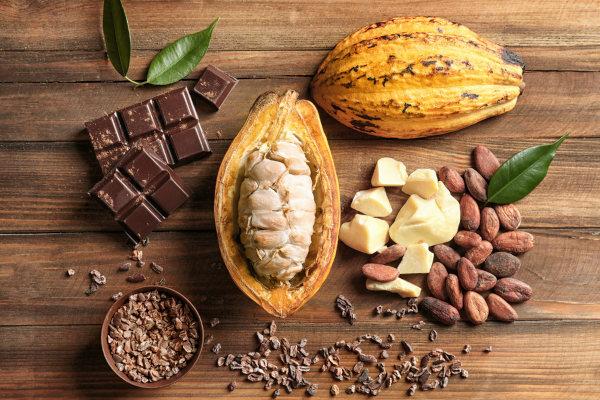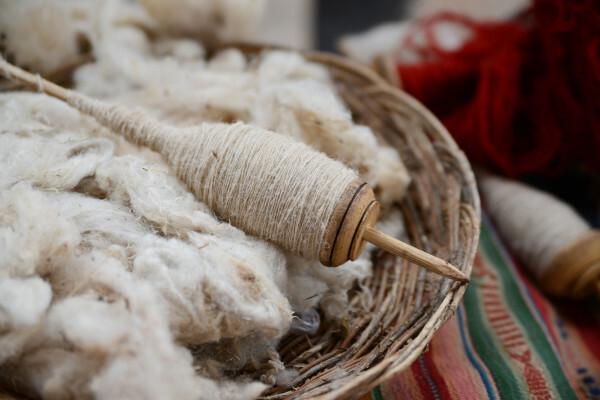Feedstock It is the basic element for the production of intermediate industrial goods and finished goods. The raw materials are of primary origin, derived from extractive activities, agriculture and animal husbandry. They can also be used in production both in their natural form and after having gone through some processing process.
A fundamental part of production chains, raw materials are essential for us to have access to all the products and goods that are part of our daily lives. In emerging and underdeveloped countries, raw materials constitute the main pillar of their respective national economies.
Read too:Commodities — primary products sold in large volumes
Topics in this article
- 1 - Summary of raw material
- 2 - What is raw material?
-
3 - Types of raw material
- → Mineral raw material
- → Animal raw material
- → Vegetable raw material
- 4 - What is the raw material used for?
- 5 - Importance of raw material
- 6 - Differences between raw materials and inputs
- 7 - Exercises on raw materials
Raw material summary
Raw material is the base element for the industrial production of intermediate or final goods.
Can be used in its natural state (in nature) or processed.
Raw materials are classified according to their origin into: mineral, animal and vegetable.
Mineral raw materials, such as iron, copper and oil, are those obtained through mineral extraction, removed from soils and rocks.
Animal raw materials, such as skins, leather and meat, are those obtained from animal husbandry, fishing and legal hunting.
Vegetable raw materials, such as grains, natural fibers and wood, are those obtained through agriculture or plant extraction.
Raw materials are important for production chains and the national economy of underdeveloped and emerging countries.
Inputs are all the elements that are part of the production chain of a good, from contracted services to essential components for production, such as electricity and equipment.
Raw materials are a type of input, but not all inputs are raw materials.
What is raw material?

Raw material is the name given to elements that constitute the basis of all industrial or manufacturing production. These are the components that are used to manufacture new intermediate products, useful in one or more production chains, or finished products, which are those intended for their consumer Final.
Before being introduced into the production process, raw materials may be subjected to some type of processing or transformation. If this does not happen, we say that they are used in their raw form, or in nature.
Most of the products we know as raw materials come from industrial activities. primary sector of the economy, such as mining, agriculture and plant extractivism, for example. For this reason, there are many natural raw materials that are ingested by humans in their raw form, such as fruits, certain grains and vegetables.
Do not stop now... There's more after the advertising ;)
Types of raw material
We saw, then, that raw materials originate in the primary sector of the economy, which comprises extractive activities It is agricultural. Therefore, raw materials can be classified according to the sector or the nature of the element to be used into three categories: mineral, animal and vegetable.
→ Mineral raw material

Are those elements obtained from mineral extraction (or mining) and which are removed from water, soil and rocks on the surface or subsurface, both on the land portion of the continents and in the oceans, as is the case of continental shelves.
- Examples of mineral raw material: Iron ore is a type of mineral raw material widely used in basic industry, which is the sector of the industry responsible for the composition of parts and equipment for other factories. Steel is one of the elements made from iron. Copper is also a raw material for the manufacture of various products, from those that require energy conduction, such as motors and household appliances, to jewelry.
→ Animal raw material

Are those elements obtained from the economic activities of animal husbandry, livestock calls, fishing and also hunting carried out by issuing a license from the environmental agency. Raw materials of animal origin serve a variety of purposes: from food to the manufacture of items such as fabrics, accessories, tools and clothing.
- Examples of animal raw material: Wool is an example of an element of animal origin used in the textile industry to manufacture fabrics and clothing. Milk is an animal raw material that can be consumed directly by humans or even serve the manufacture of a wide variety of foods categorized as dairy products, such as cheeses and yogurts. In addition to these two examples, we also have hides, skins, bones and meat.
→ Vegetable raw material

Are those elements obtained from agricultural activity, that is, through planting and harvesting, or through plant extraction. Some of the vegetable raw materials can be consumed in their natural state, without going through any processing or transformation process, like fruits.
- Examples of vegetable raw materials: soy is a grain used as a vegetable raw material for the production of oil, animal feed and other types of food, in addition to being consumed in nature. Cotton is another example of vegetable raw material, widely used for the manufacture of fabrics and clothing, as well as composing other types of goods, such as oils. Another example of vegetable raw material is wood, the basic element for making furniture.
Read too: Industry — responsible for transforming raw materials into products
What is the raw material for?
The raw material is a fundamental element for the development of industrial and manufacturing production of all the food, equipment, tools, objects and products that we use in our daily lives. So, we can say that raw materials serve to compose all the goods that are intended for both the final consumer and industries for the production of new goods finished.
Importance of raw material
Depending on the use given to raw materials, they are considered the most important elements within a production chain of a finished or intermediate good. We can say, then, that Without raw materials, the industry is not able to carry out its routine activities, nor can we have access to all the products we use in our daily lives.
From the food and drinks we eat to clothes and hygiene products, from furniture and appliances to vehicles: everything we we have access to was produced because there were one or more raw materials available from the beginning of the manufacturing process of these assets.
The importance of raw materials for the economy also extends to the national economy of many territories and countries, especially when we consider developing nations and underdeveloped. These national economies are based on the production and commercialization of goods of primary origin, which are the raw materials such as grains, ores, animal derivatives and even fossil fuels such as Petroleum. In this way, we have raw materials as the main source of revenue for countries that are large exporters of primary products.
Differences between raw materials and inputs
Feedstock |
Input |
Products that constitute the basis of industrial production, used in their in nature or processed. |
All products, services and elements that are used in the industrial production process, at all stages of the production chain. |
Raw materials are a type of input. |
Not all inputs are raw materials. Machinery, vehicles and electricity used during production are other examples of inputs. |
Exercises on raw materials
Question 1
(Uece) Basic products, in their raw state, considered as raw materials, originating from cultivation or extraction, are known as:
a) durable goods.
b) strategic assets.
c) commodities.
d) energy resources.
Resolution: Alternative C. Raw materials that are in their raw state and are sold in large volumes, traded on stock exchanges, such as grains and oil, are also called commodities.
Question 2
(Unicisal) Bauxite production in the world is limited to a few countries. It is the basis for the production of metallic alloys for wide industrial use. Brazil stands out in the production of this raw material and is produced from it:
a) aluminum.
b) steel.
c) iron.
d) copper
e) zinc.
Resolution: Alternative A. Bauxite is a very important mineral for the basic industry, as aluminum is extracted from it.
Sources:
MOREIRA, Igor. Geographic space: General geography and Brazil. São Paulo: Editora Ática, 47th edition, 3rd reprint. 455p.
ROSS, Jurandyr L. Sanchez. Geography of Brazil. São Paulo: Editora da Universidade de São Paulo, 2019. 549p.
Would you like to reference this text in a school or academic work? Look:
GUITARRARA, Paloma. "Feedstock"; Brazil School. Available in: https://brasilescola.uol.com.br/geografia/materia-prima.htm. Accessed September 29, 2023.
There are several units of concentration, and mass title is one of them. It expresses the...
Click here, find out what heat stroke is and its causes and symptoms. Find out what...
Click here and find out what raw materials are and what they are used for. See what the different ones are...

